Kim Seevers powerwalks up Halsted Street just after noon in her spotless red, white and blue Reeboks, the Chicago wind no match for her trademark blond close-crop.
She pulls up a chair at The Front Bar, attached to Steppenwolf Theatre where she’s working this cloudy Saturday in January, and exhales.
“I’m gonna sit down for five minutes,” she says.
She shares a few moments from the previous night’s staging of “Last Out: Elegy of a Green Beret,” a play produced by The Heroes Journey, her nonprofit employer. Three minutes after she sits down, her phone pings. “Ok, let’s go.”
We walk back down Halsted, and there she is: Amy Bishop, 53, Chicago.
“What’s uuuup?” Seevers yells.
“KIM!” Bishop howls.
“Ms. Seevers if you’re nasty,” Seevers says as they hug.
They hadn’t seen each other since 1989, when Bishop graduated from Grier School, a boarding school for girls in Birmingham, Pennsylvania where Seevers, now 64, coached and taught physical education and business math.
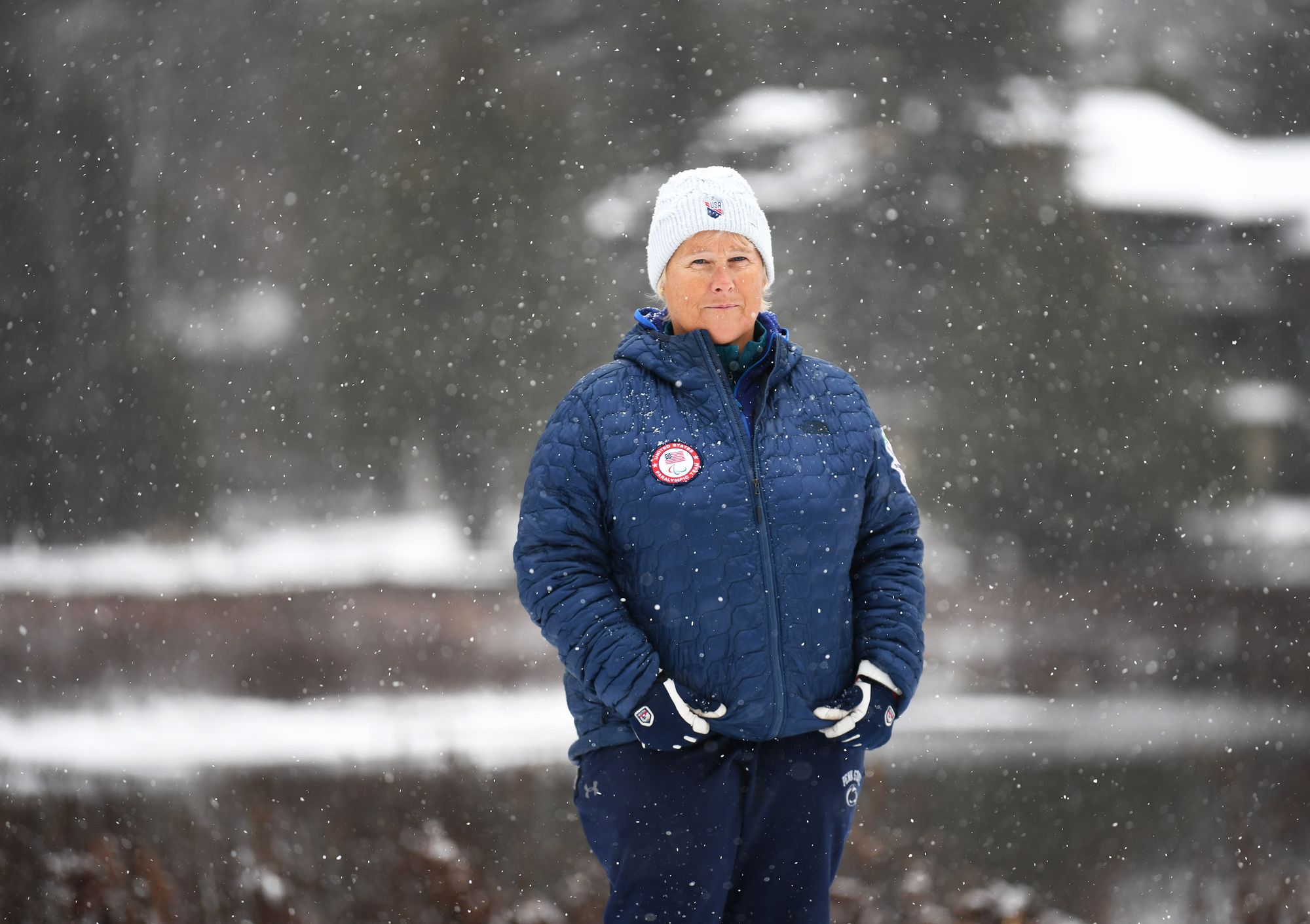
With a swipe of Seevers’ temporary access badge, we stepped inside Steppenwolf and headed upstairs, where she needed to be ready for the next part of her day: greeting veterans, family members of veterans, and Gold Star family members once they finished a workshop inside the meeting rooms.
Organized by The Heroes Journey and presented by the Gary Sinise Foundation, the workshop is built to help participants share and process their experiences. It’s at times heavy but always essential, deeply personal work.
It’s wild to think that that January day featured the bookends (thus far) of Seevers’ 40-plus-year career journey from gym teacher to 2014 Paralympian to deputy director of a combat veteran-run support organization. The journey itself is wild. How can one person touch and change so many lives?
Growing up in the most deadpan-named city of all time — North East, Pennsylvania (thusly named because it’s northeast of Erie, Pennsylvania) — Kim and her siblings spent as much time as possible outside.
She and her brother lifeguarded on the beach of Lake Erie, taking personal advantage of any weather closures.
“We’d close the beach, but we’d all go in and body surf for hours,” she says. “It’s not like the beach where there’s a shore break and then it’s shallow. The waves come in and then slam you down. We got the crap kicked out of us. It was great.”
In high school, she got her first taste of teaching, both swimming and skiing and played softball. She went on to pitch and earn her health, physical education, recreation and dance degree — no lie, that’s what it says — at Slippery Rock University from 1976 to 1980. Then, she continued on to grad school at Penn State, where she also served as a grad assistant softball coach.
Her master’s program in performance assessment included coursework, a teaching assistantship and research for her thesis: whether different types of softball coverings affect the lift, drag and rotation of pitches.
For that research, she studied film of all kinds of different pitchers, including men and women at various levels of the sport. That exercise wasn’t quite as simple in 1983 as it is today.
“It actually solidified what I wanted to do for a living,” she says. “I had to do biomedical research for my thesis, and it was mind-numbing sitting behind this big digitizer thing and tracing the spin of a softball pitch. I realized it was the mind-numbing research that I hated and the teaching I loved.”
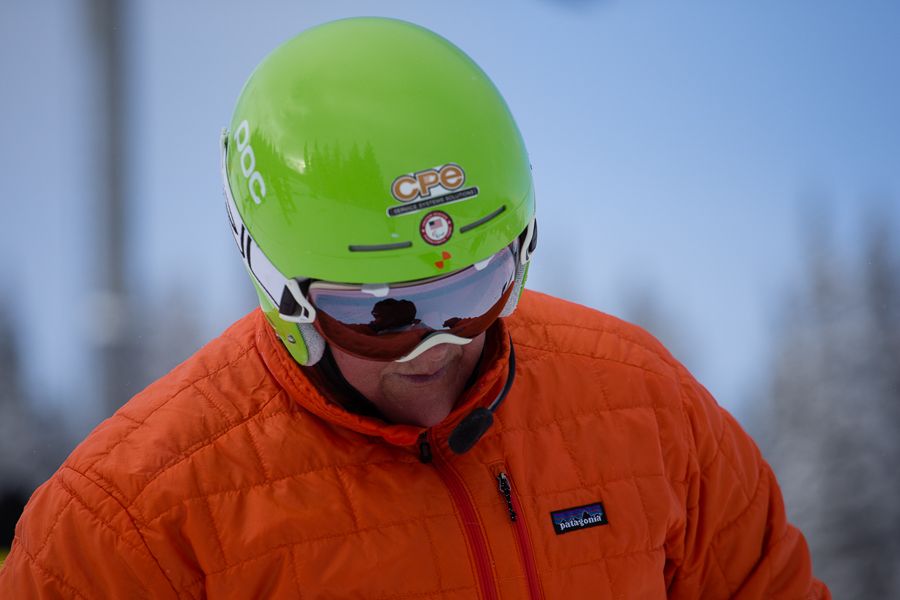
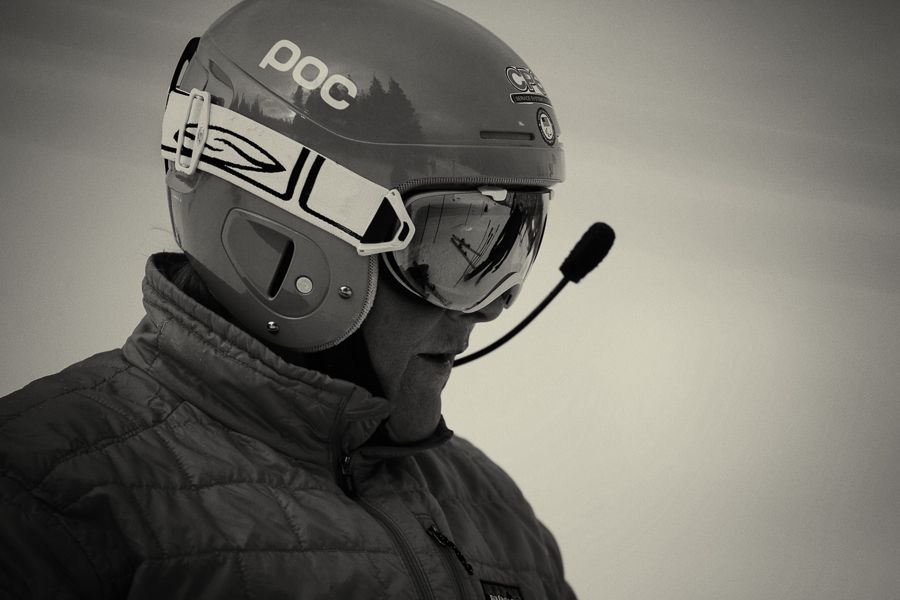
Seevers is one of the rare people who finds her own success in helping others. [Matthew Fults photos]
As for the question of whether softball covers made a difference in pitches: “No."
The research wasn’t a waste, though. From it, she learned how important little nuances in movement and mechanics can make all the difference in athletic performance.
“A lot of stuff I learned there I use in coaching all the time. Understanding biomechanics of movement and things like that, that’s what makes you a good coach.”
She applied that knowledge during her time as a guide for Staci Mannella, a visually impaired ski racer, and she applies it now as manager of the U.S. Para World Cup team. More on those in a bit.
Back at Penn State, grad school apparently wasn’t enough. In 1983, she decided “for some stupid reason” to get a puppy. It was while paper training Zama that the first of her many Forrest Gumpian life turns presented itself. Somehow on the newspaper scattered on the floor, she noticed a classified ad for athletic director at Grier School.
She didn’t know the school existed, but she applied and got the job. She served as athletic director, coached and taught gym, business math and algebra.
“Kim was the best,” says Bishop, a Chicago boutique owner. “To this day, the only thing from school that I apply in my day-to-day world is the stuff I learned from her in business math.”
Stuff like how to manage money and how to apply for a loan. Bishop remembers being hauled down to a car dealership and actually going through the process of applying for a car loan — all the questions, all the paperwork.
“And then the sales guy is like, ‘Well, do you want to take it out for a test drive?’ And I’m like heck yeah. I didn’t even have my license, but I’m not sure if Kim knew that.”
(There were no accidents, and she didn’t buy the car.)
Then, in addition to attending grad school and teaching at Grier, Seevers also took a job as a ski instructor at nearby Tussey Mountain, which had just opened a new ski school.
“It didn’t open until 2 p.m., so I’d teach during the day, then do all my phys ed classes, grab my dog and go to the ski area and teach till it closed at 10 p.m.,” she says.
Which is why she didn’t finish her thesis until 1986. It may also explain why, on that January day in Chicago, she was buzzing through work and her Bishop reunion for a good 17 hours, sustained only by the food at hand: half a Subway sandwich and a couple glazed donuts.
Tussey brought the next Gump turn: Bill Hetrick, who ran the ski school at Tussey, also was a leader at and big believer in the Professional Ski Instructors of America (PSIA), a group that trains and certifies ski instructors across the country. (The American Association of Snowboard Instructors was added in 1997 to create PSIA-AASI.)
Because of his leadership, Tussey had a strong PSIA culture — instructors were expected to continually improve their own ski education, skills and certifications.
With her interest in biomechanics and teaching, PSIA was right up Seevers’ alley. She soaked up all the development she could and eventually earned her Level III certification, which essentially means you can walk into any snow school in the country, and that school will know you can teach anyone in any conditions, on any terrain.
In 1990, Seevers started down the path to become an examiner who assesses whether instructors meet the standards to be certified and recertified. By 1997, she was on the training squad for PSIA’s Eastern division and had earned a reputation as a leader herself. So when the education director job opened up for that region, her peers encouraged her to go for it.
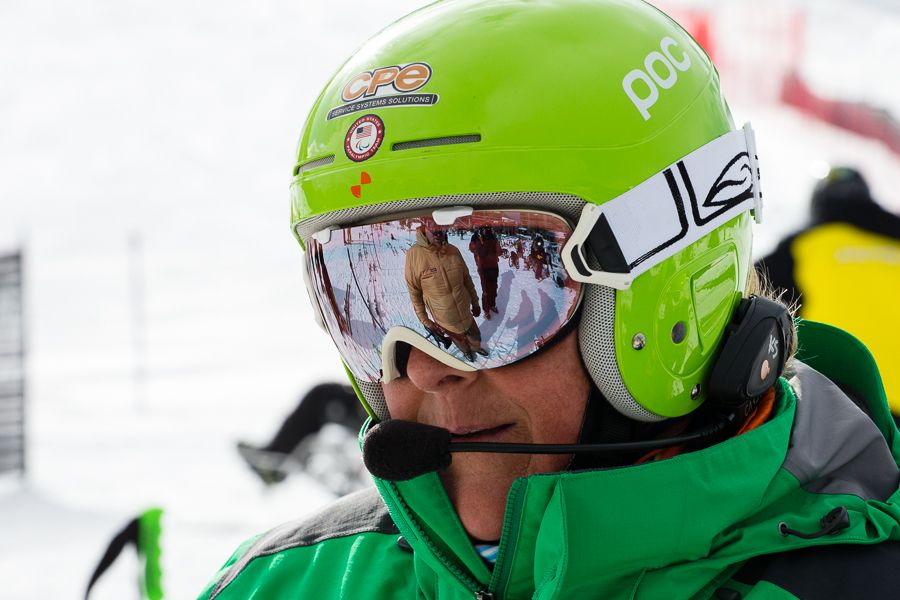
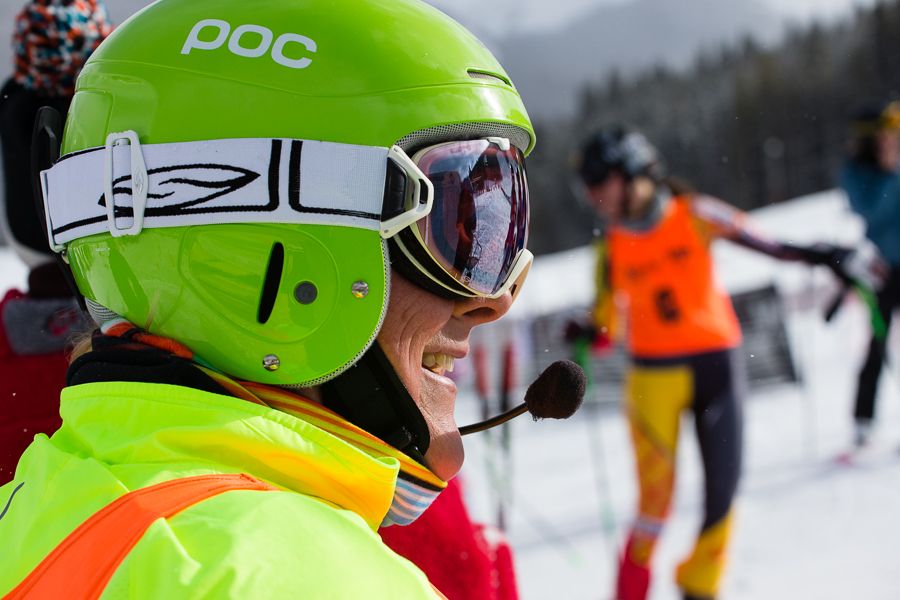
As an athlete and a coach, Kim has found herself on a personal journey much like Forrest Gump. [Matthew Fults photos]
“I was happy at Grier School, and everyone kept saying, ‘It’s not going to come around again,’ so I applied for it, and that got me into it,” she says.
So in 1997, she left Grier and moved to Albany, NY to build and run the training program for instructors within the Eastern division. There, her officemates happened to be two women who ran PSIA’s adaptive program for people with disabilities as well as an adaptive program at nearby Windham Mountain.
Though the program soon split off from PSIA and became the Adaptive Sports Foundation (ASF), the officemates invited Kim to learn how to teach and work with people with disabilities.
“I said, ‘I’ve never done adaptive,’ and they said, ‘It’s all the same stuff. You’re trying to get people to make the same movements, but maybe they don’t have their left leg.”
She had no way to know that that invitation would start her down the path to Team USA and the 2014 Paralympic Winter Games in Sochi.
Seevers did start skiing with people with disabilities and even crossed paths with a very young Mannella, who at age 4 was already skiing with some gumption.
And in 2004, Seevers left PSIA to work full-time for the Adaptive Sports Foundation, where she continued to teach as well as write grants and develop education programs. Among those programs: ski outings for wounded veterans.
In one of the first outings, back in 2004, a half dozen recently injured veterans made the trip from Walter Reed Medical Center in Maryland to Windham Mountain. Many of the ASF volunteers were firefighters and first responders, and because of Windham’s proximity to New York City, 9/11 was still very fresh.
The volunteers caught wind of the veterans’ visit and took charge of ensuring a proper welcome.
“When the firefighters say they’re gonna do something, you don’t worry about it,” Seevers says. “It’s gonna get done.”
Sure enough.
Picture it. On one side of the Windham Mountain base lodge is the mountain. On the other is a valley. Looking down the valley side, past the flagpole, you see the main road.
“The flag is blowing, and all of a sudden, we hear the sirens start. They’re coming up the road in this whole caravan. Sirens, lights, the whole thing.”
The firefighters led the veterans from their hotel to the lodge in an honored, sacred procession.
“And I’m just standing there watching, sobbing,” Seevers says. “That kind of augured the whole veterans thing into me.”
Last year, when I was here, I was close to pulling the trigger. This changed my life.
She remembers “one kid named Oscar,” a young veteran who had recently lost both of his feet and wasn’t especially eager to ski. He finally went on the last day of the program after some gentle nudging from Dave, one of the ski instructors.
“Dave was trying to get Oscar into a ski boot, and Oscar was getting really frustrated. Finally, he says, ‘You can’t possibly understand,’” Seevers recalls. “Dave pulled his ski pants up and said, ‘Yeah, I do understand.’”
He had lost both feet in Vietnam.
The next year, Oscar came back to Windham for the same event and talked with organizers.
“He said, ‘Last year, when I was here, I was close to pulling the trigger. This changed my life.’”
PSIA soon came back calling. In 2006, the organization’s national education director was retiring, and they needed someone to fill the role at PSIA headquarters in Lakewood, Colorado. It was a big role that Seevers had no intention of pursuing, but the executive director called and said he expected her resume soon. She sent it, and once again, she “fell into” the job.
And it suited her.
“I’ve always liked creating programs, trying to find innovative ways to help people learn, and that’s what that job was, looking at our certification process, helping to write some of the study guides and workbooks.”
She created a master teacher program aimed at people who had trouble meeting the criteria for the skiing part of their Level III certification — a significant jump from Level II — but were still committed to ski teaching.
She created education programs for instructors interested in specific types and elements of teaching, everything from teaching adaptive skiing, seniors and children to learning the physiology and biomechanics involved.
She started a video library that instructors could access for visual demonstrations of the drills covered in the manuals, everything from teaching someone in powder or on ice or in bumps.
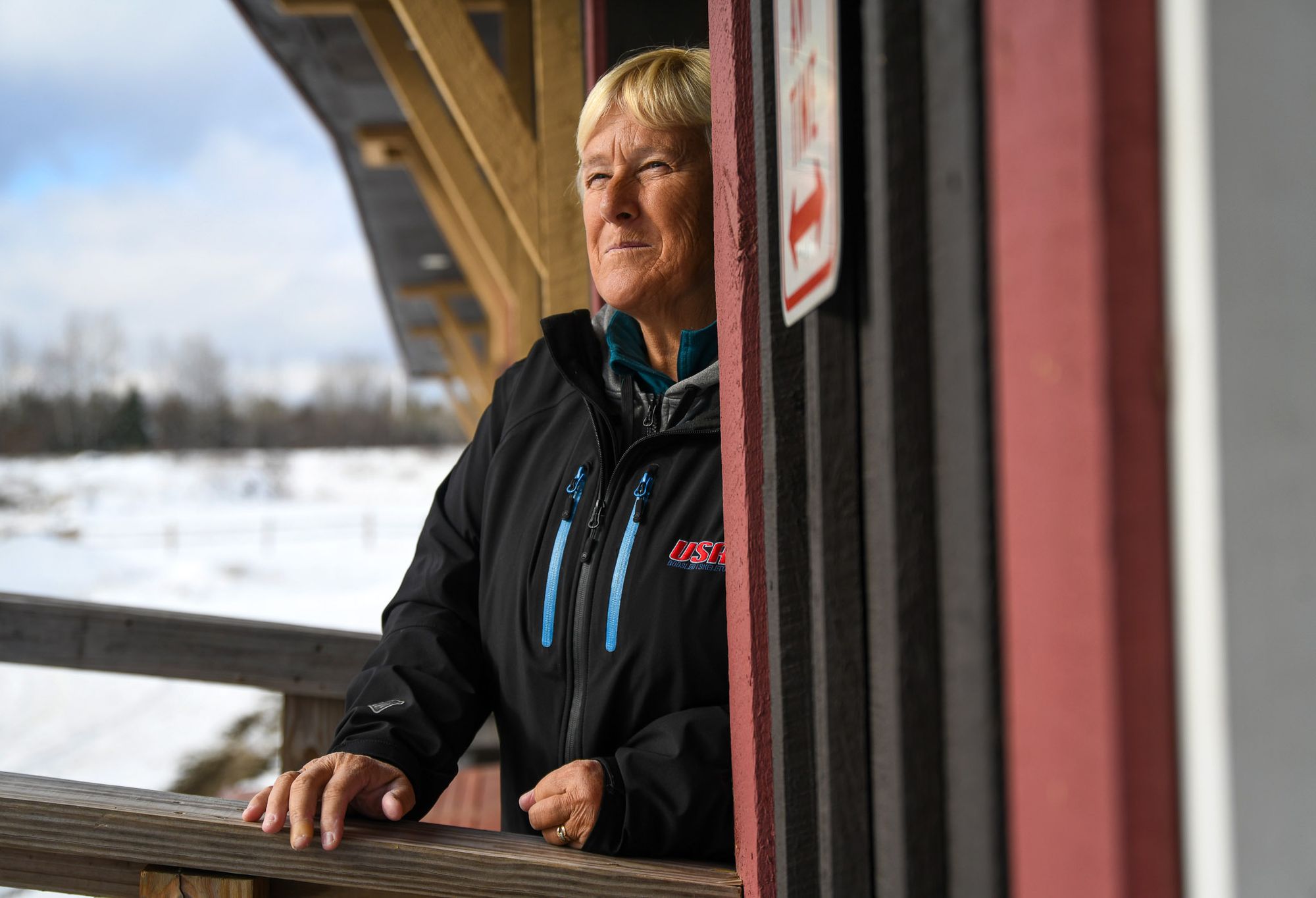
“For people in the Eastern division, we rarely get powder, but it’s still part of the exam, so you need to know it,” she says. The videos helped make unfamiliar conditions more familiar for instructors.
Next, she set about making an educational piece for people who wanted to go beyond traditional runs and into halfpipes, jumps and slopestyle-type outings.
Seevers and members of the PSIA/AASI national team went to Mt. Hood Oregon Resort one summer and made a “seedy house” their home base. David Oliver was the first PSIA national team member whose specialty was freestyle, and Butch Peterson was a national team member whose specialty was snowboarding.
At Mt. Hood, it was their job to teach Seevers skills that she would then translate into a hip instructional piece that could be handed out to adventurous skiers and snowboarders, especially young ones.
“We went up to the mountain, and the first day, they taught me how to jump, and we went back to the seedy house and we wrote it up. Then the next day, they taught me how to ride a rail. And we went back and wrote it up. The next day, it was slopestyle stuff.
“The whole piece was called Get a Clue, and it had state-of-the-art graphics and wasn’t about saying ‘This is safe and this isn’t,’ but more like, ‘Hey, when you roll up to a jump, think about this. If you’re going into your first halfpipe, here are some things to think about.’”
Rossignol paid for thousands of copies, which landed both at snowsports schools and in competitors’ bags at various freestyle events.
In addition to running PSIA’s national education program, Seevers served as a guide for a young visually impaired (VI) skier. In 2008, they attended the annual Hartford Ski Spectacular, a learn-to-race camp at Breckenridge, where an aspiring VI racer from New Jersey was also there, and she was turning heads.
Twelve-year-old Staci Mannella skied with speed and fearlessness that left the Ski Spectacular coaches excited — and her coaches back east in a sort of nervous awe. As skilled as she was, Staci had extreme sensitivity to light and visual acuity of about 3 feet — leaving no margin for error when flying down a mountain.
“I knew those Ski Spec coaches and was talking to them one night,” Seevers recalls, “and they said, ‘You need to do something with that one because she’s got a lot of potential. She could be really good.’”
With the adaptive ski world as small as it is, Kim and Staci had crossed paths over the years starting when Staci was just 4. It made sense to race together.
And that began what is now perhaps the most well-known chapter of Kim’s career: her partnership with Staci and their quest — well, Seevers’ quest, initially — to reach the 2014 Winter Paralympics in Sochi, Russia.
“I was so young, I didn’t know what my goals were then, but I was excited about the idea of a career in ski racing,” says Mannella, now 26. “I think she had goals at first, and then I evolved into them and grew into them myself as a person and as an athlete.”
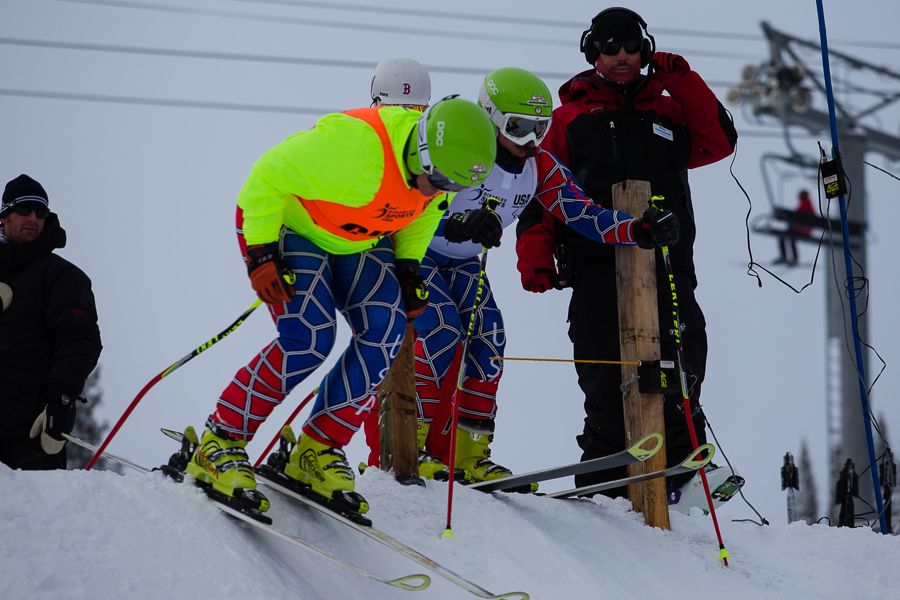
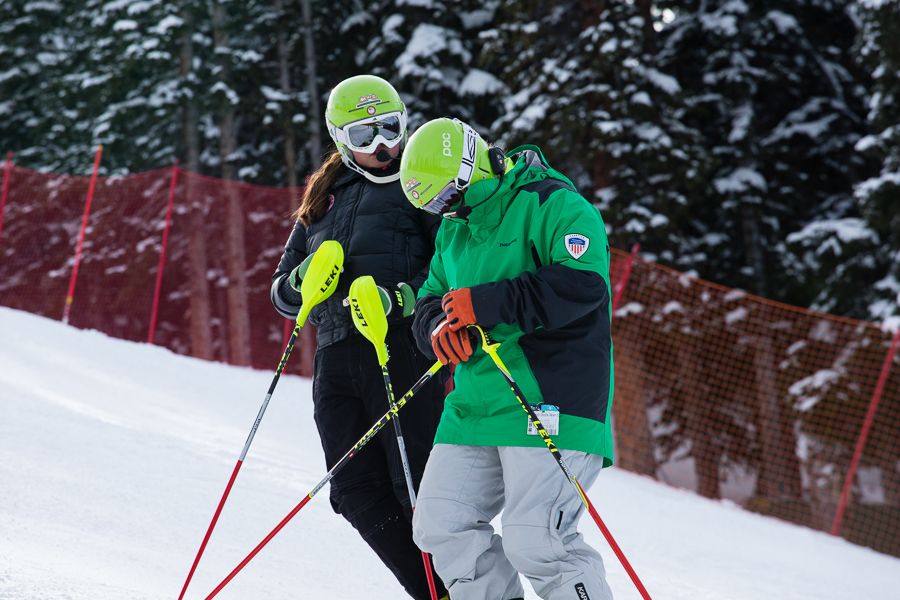
Staci Mannella and Kim Seevers, pre-Sochi 2014. [Matthew Fults photos]
As fate would have it, Kim was already planning to move from Colorado back to New York to be closer to her family. She left PSIA at the end of 2008 and went back to work writing grants for the Adaptive Sports Foundation, a job that gave her the flexibility and home base she needed to be Staci’s ski racing guide.
They started out training mainly at Windham Mountain, a small resort an hour southwest of Albany with 1,600 feet of vertical. With VI skiing, there’s a lot more to training than building strength, speed and biomechanics.
Kim and Staci had to learn how to read, communicate with, and trust each other using microphones inside their helmets. Hard to do under any conditions, let alone on skis weaving in and out of gates down a mountain at speed.
But they did it, and soon they skied their first race, at Winter Park in Colorado. They didn’t know what to expect. Would they even be able finish the course?
I go over the pitch and see people at the bottom and hear the cowbells and all of it. And I just start crying.
“We’d never skied a full-length slalom before, only parts of Windham” Seevers says. “At the time, our microphones weren’t that good, and communication wasn’t good. I kept saying, ‘Staci, stay right behind me,’ and she’s saying, ‘No, Kim, don’t go slow!’
“At Winter Park, you go over this dropdown into the finish line where the people are, and we’re coming up to that drop, and I’ve got this little kid behind me, and she’s saying, ‘I’m good, Kim, I’m good! I’m good!’
“I go over the pitch and see people at the bottom and hear the cowbells and all of it. And I just start crying. Staci is cool as a cucumber, always was, and she says, ‘Kim, are you crying? Pay attention!’ That was our first competition.”
They kept training and racing, traveling back and forth across North America, on over to Europe, even all the way to Australia and New Zealand.
Six years later, wearing their star-spangled navy sweaters with a red “USA” emblazoned on the back, they joined the rest of Team USA in the Parade of Nations at the opening ceremony of the Sochi 2014 Paralympic Winter Games. They made it. And not only had they made it, but at 17 and 56 they were believed to be the youngest and oldest athletes competing at the Games.
They placed sixth in slalom and giant slalom.
This documentary followed Seevers and Mannella for the two seasons leading into the 2014 Olympic Winter Games in Sochi.
“She taught me what it means to be a high-performance athlete,” Mannella says. “She was a very serious coach, and I used to make fun of her as a kid, but it helped me focus when training.
“And she’s hard on herself, too. Sometimes people think the athlete is the only one who has a lot of pressure on them, but that’s not the case. The guides are performing as much as we are.”
It was a profound partnership, one that inevitably had to end, in athlete–guide form anyway.
For seven seasons, they had not made a ski turn without each other. In 2015, it was time for them both to move on. Staci was old enough to be eligible for faster races like the super combined and super G, and Kim recognized her own limitations.
“I started realizing that when we were going to go over a drop, I’d have that split second where I was thinking about me and not her, and that’s not safe,” Seevers says. “Plus nobody needs to see an old lady in a speed suit.”
After the Games, she and Staci had fielded all kinds of requests for interviews and appearances. Can you come speak to our Lions Club? Can you be the keynote for our annual meeting? Can you and Staci attend our big event?
And when the fame ran its course, Kim struggled with such suddenly open days and mental space.
“I was having a personality crisis because my whole existence had been tied up in that identity,” she says. “Plus, I’m competitive and goal-oriented, and I had no goals.”
So in 2015 she dove into CrossFit as a way to keep her mind and body performing to Kim Seevers Standards.
She had no idea that it also would send her — and Team USA — down an entirely new path.
Like so many of Kim’s chapters, this one starts with a chance encounter at her gym in Albany.
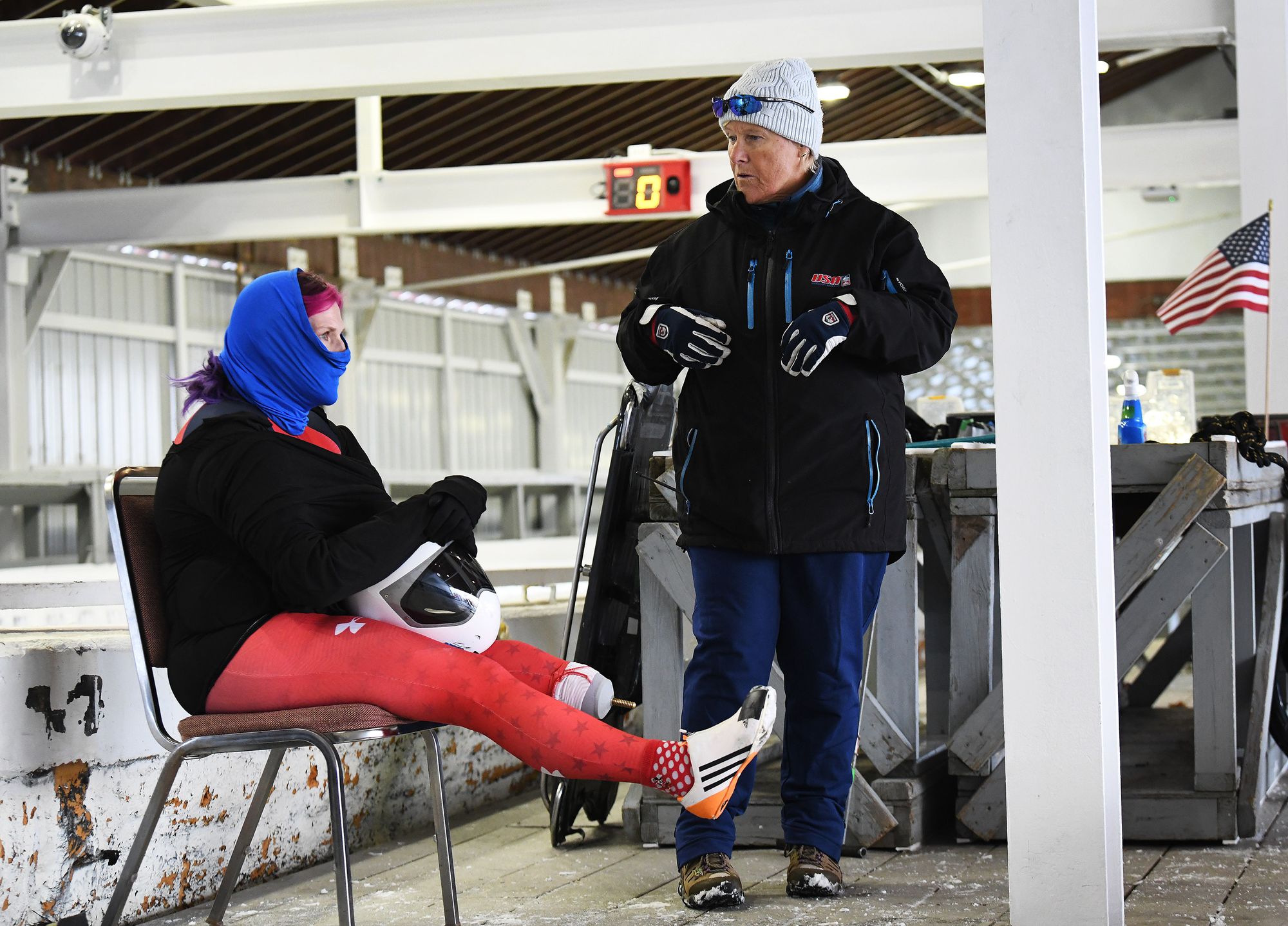
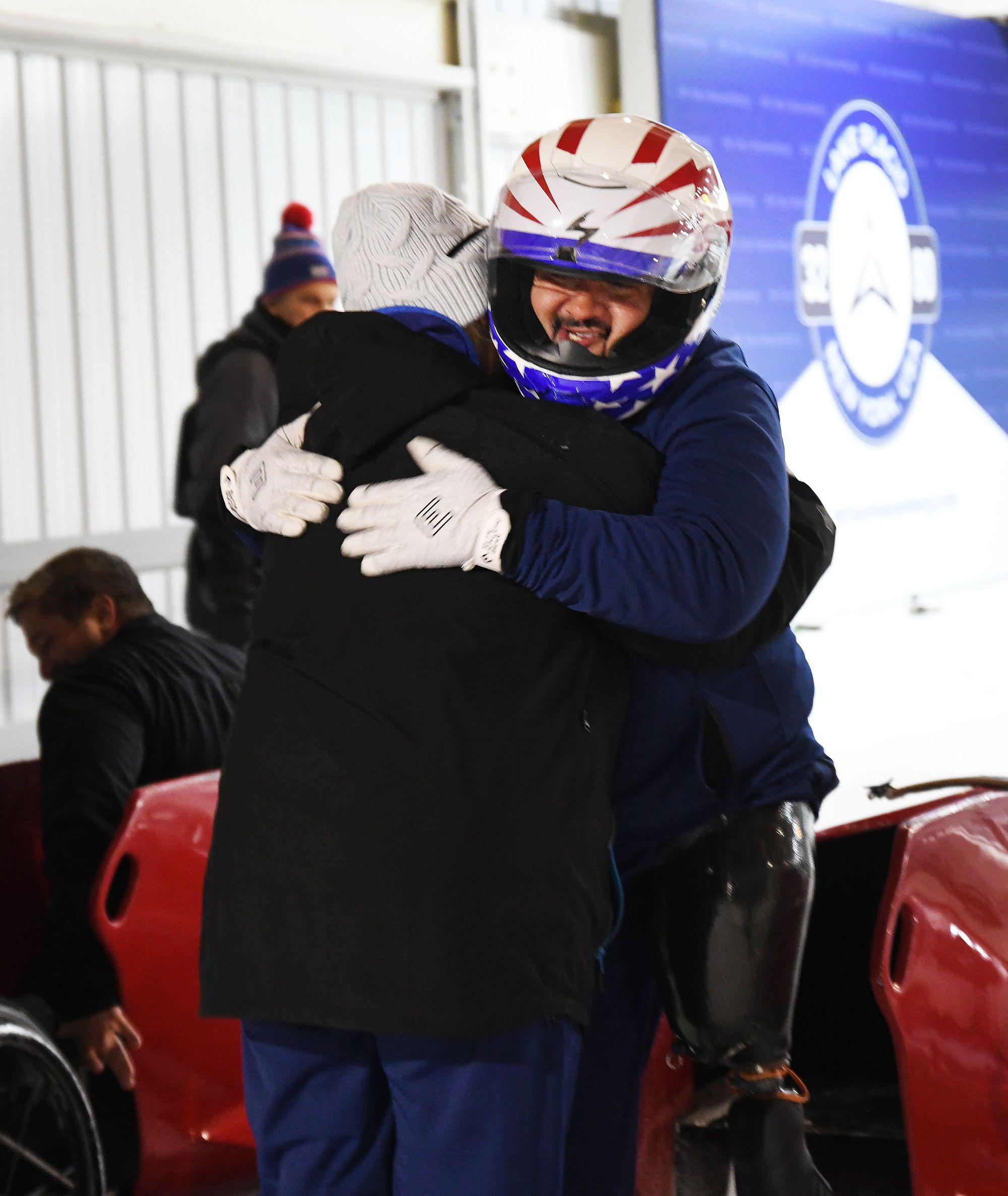
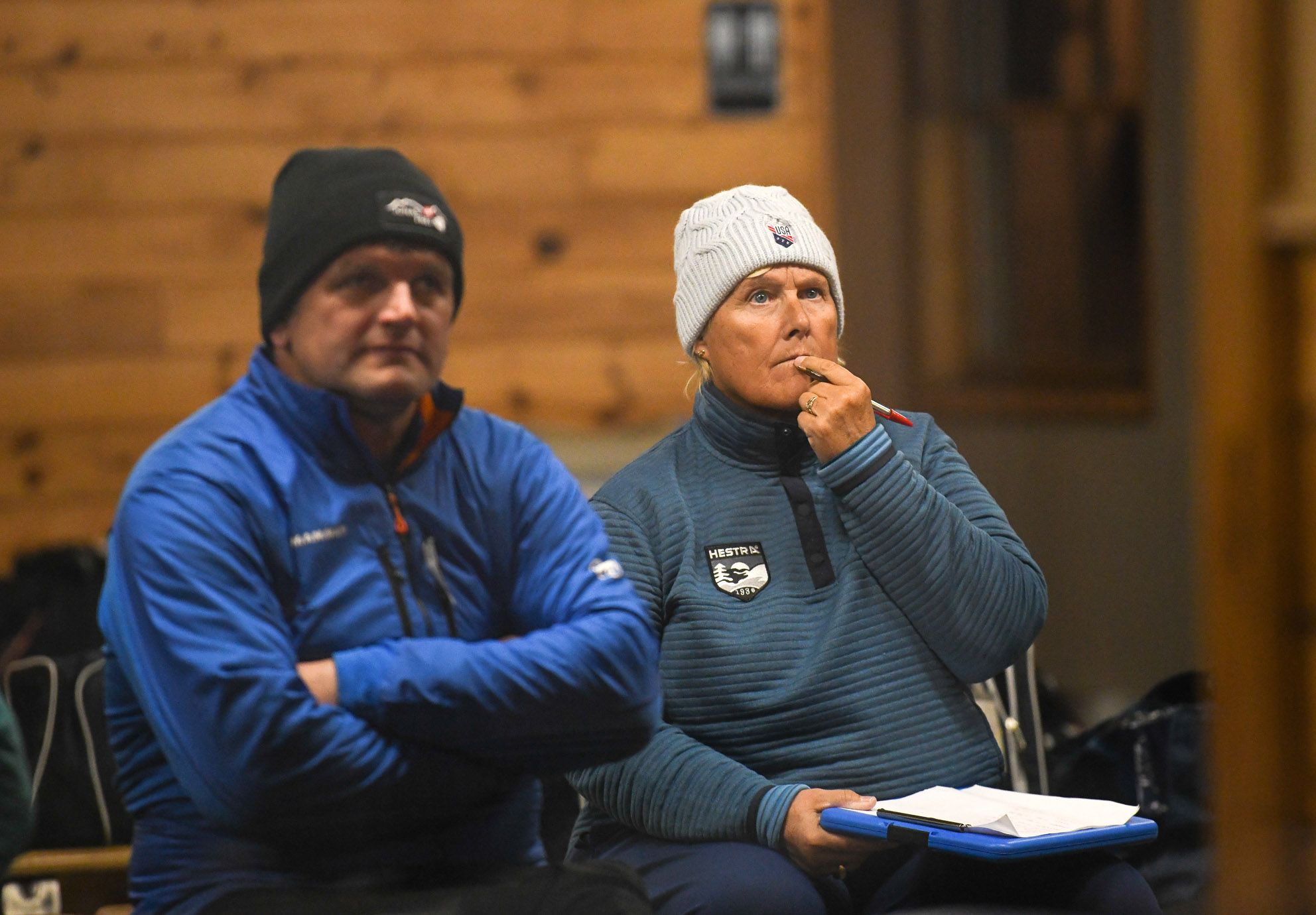
Her latest chapter involves veterans, para-bobsled and more coaching. [Heather Ainsworth photos]
“This guy came into the gym one day as a drop-in,” she says. “He was an amputee and had some Wounded Warrior stuff on his prosthesis.”
After class, Seevers introduced herself and started gathering his story: His name was Jason Sturm, and he was working to find ways for athletes with disabilities to be able to bobsled in North America.
As he and Kim got to know each other, right there at the gym, wheels started turning. We’re only a couple hours from Lake Placid, right?
They exchanged phone numbers, and Kim got to work trying to gather the right people in the right organizations to help convince the track manager at Lake Placid that a para-bobsled program was a good idea.
With her signature no-nonsense delivery, Kim made the case: “You want people to understand that just because they have a disability, they’re not broken. They’ve got the ability. We were able to show Jason, who was a CrossFit king — just really, really physically fit. And yeah, he doesn’t have half a leg, but he’s inside a sled so it doesn’t matter, and he has all the same faculties he needs to drive a bobsled that anybody else has.”
You want people to understand that just because they have a disability, they’re not broken. They’ve got the ability.
She got the deciders’ buy-in.
Next, she set out to find the money needed to launch and run the program. As a grant writer for the Adaptive Sports Foundation, she was in the perfect role at the perfect time to make it happen.
She secured a U.S. Department of Veterans Affairs Adaptive Sports Grant to cover all the logistical and organizational costs that go with running a para program. And just like that, they hosted their first bobsled camp for para-athletes in 2015.
Year after year, grant after grant, the program now resides with USA Bobsled/Skeleton, the national team’s governing body, and has grown to be a bona fide Team USA that hosts camps and competes in Para World Cup and other events around the world.
It’s more than an athletic team, though. For some of the athletes, it’s been a life-changer.
Will Castillo was doing his best to transition from soldier to wounded veteran to … something. How do you move on, exactly, from the trauma of losing your leg and the survivor’s guilt of losing your driver and gunner in an IED while serving in Iraq?
“I was going through a very difficult transition in my life,” Castillo says. “I was extremely overweight, I was into substance abuse, I was suicidal. But then I gave my life to God, and God put certain people into my life. Kim is one of those people.”
There were plenty of veterans organizations and events out there, but none really stuck with him until a friend told him about a camp in Lake Placid where veterans got to try bobsled and skeleton.
“I’d gone to programs to try and get out of the funk I was in, but fishing, hunting or skiing … those are things that might distract you for the time you’re out there, but you don’t take it back home,” he says.
He started out trying skeleton, the sliding sport where you slide down the track head first, face down on a cookie sheet-like sled. Yeah, he had some “wicked crashes,” but he kept coming back. As he improved, Seevers suggested he try bobsled.
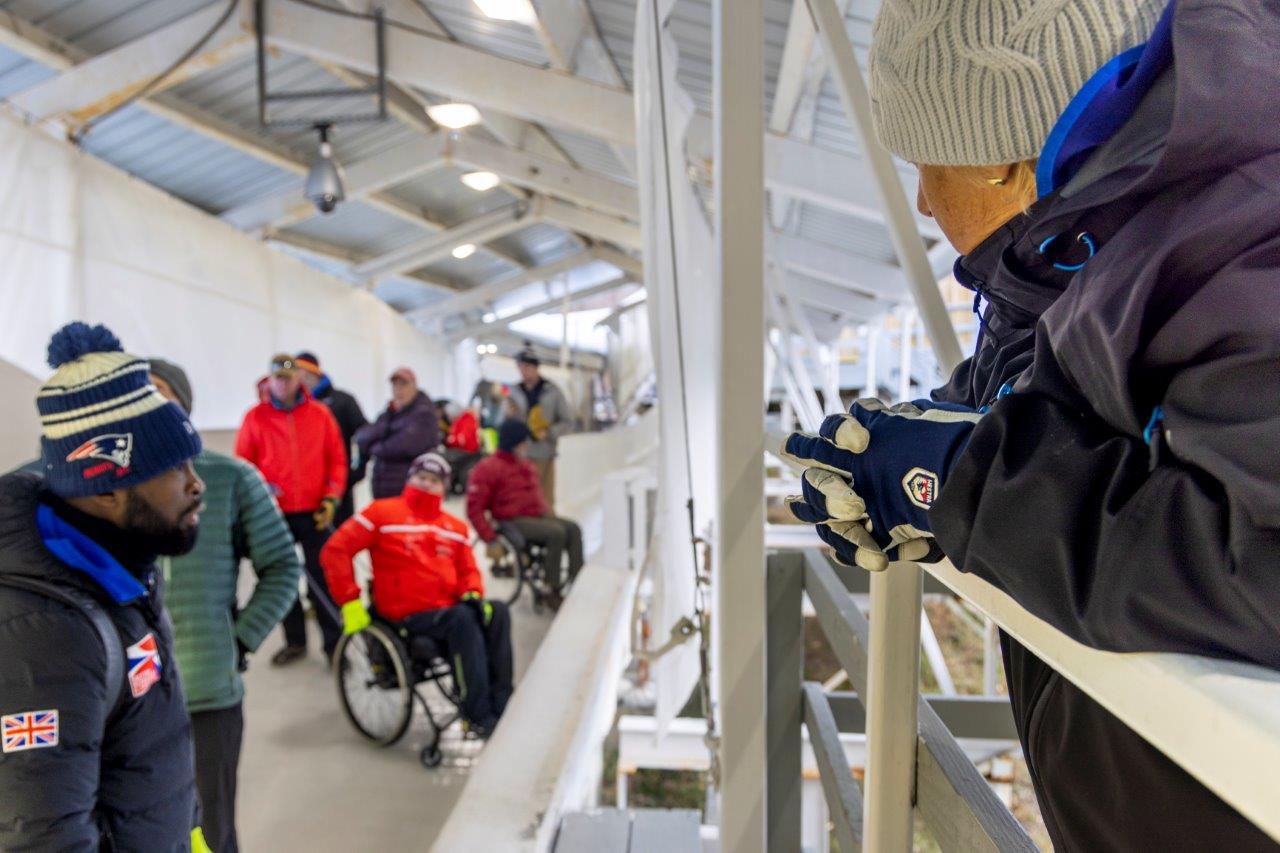
“Coach Kim is one of those people that motivate you because she won’t give you anything,” he says. “You have to earn anything you’re trying to do.”
And he did. He improved his bobsled times and technique enough that the national team was willing to give him a chance to try out if he could drop some weight. He took the opportunity, lost the weight and now slides as a seated para bobsled athlete for Team USA.
And on January 26, he won his para bobsleigh race at the World Cup in Innsbruck, Austria, with a time of 1:54.31, edging out Ellmauer Hermann by 6/100ths of a second. As of January 27, he leads the Para Sport World Cup Standings.
Coach Kim is one of those people that motivate you because she won’t give you anything.
It’s a position he wouldn’t have thought possible not so long ago.
“This program has led me to achieve goals outside of my military life and still be brave and still be disciplined and still represent my country,” he says. “Yeah, I still have depression days and still have my struggles, but I have my purpose.
“It all started because Kim Seevers decided to start a camp,” he says.
And she only set about starting a camp because she happened to be at her gym at the same time as a stranger with a prosthesis.
“It wasn’t my normal time to go to CrossFit. Jason was in town doing something for business. Everything about it was serendipity.”
Serendipity launched the other half of her current chapter, too. Seevers continued to manage the bobsled team even after her time at the Adaptive Sports Foundation ended in 2019 with changes in leadership.
And just as she was after her time with Staci ended, she was a little lost.
Then, during one bobsled camp in 2019, Seevers noticed a difference in a slider named James, who had lost his leg in combat in Afghanistan.
“He had been struggling a bit,” Seevers recalls. “And he came back to camp, and he was like a different person, talking to people and engaging, and it just seemed like he had purpose.”
At the heart of that evolution: The Heroes Journey, the nonprofit veterans advocacy organization that stages the play, “Last Out: Elegy of a Green Beret,” and runs workshops for veterans to learn how to tell their story as a way of healing themselves, relating to others and bridging what is so often a gap between civilian and military communities.
James drove the U-Haul that transported the play’s props and equipment from tour date to tour date across the country.
And when he came back to Lake Placid for that 2019 bobsled camp, he told Seevers about the organization and invited her to see the play when it came to New York City.
When she did, James introduced her to Ret. Lt. Col. Scott Mann, who founded The Heroes Journey with his wife. He also wrote the play and plays the lead character based in part on his Army career in Special Forces and Special Operations and his deployment to Afghanistan.
“At some point, James told Scott, ‘That is my bobsled coach, and she also writes grants,’” Seevers says.
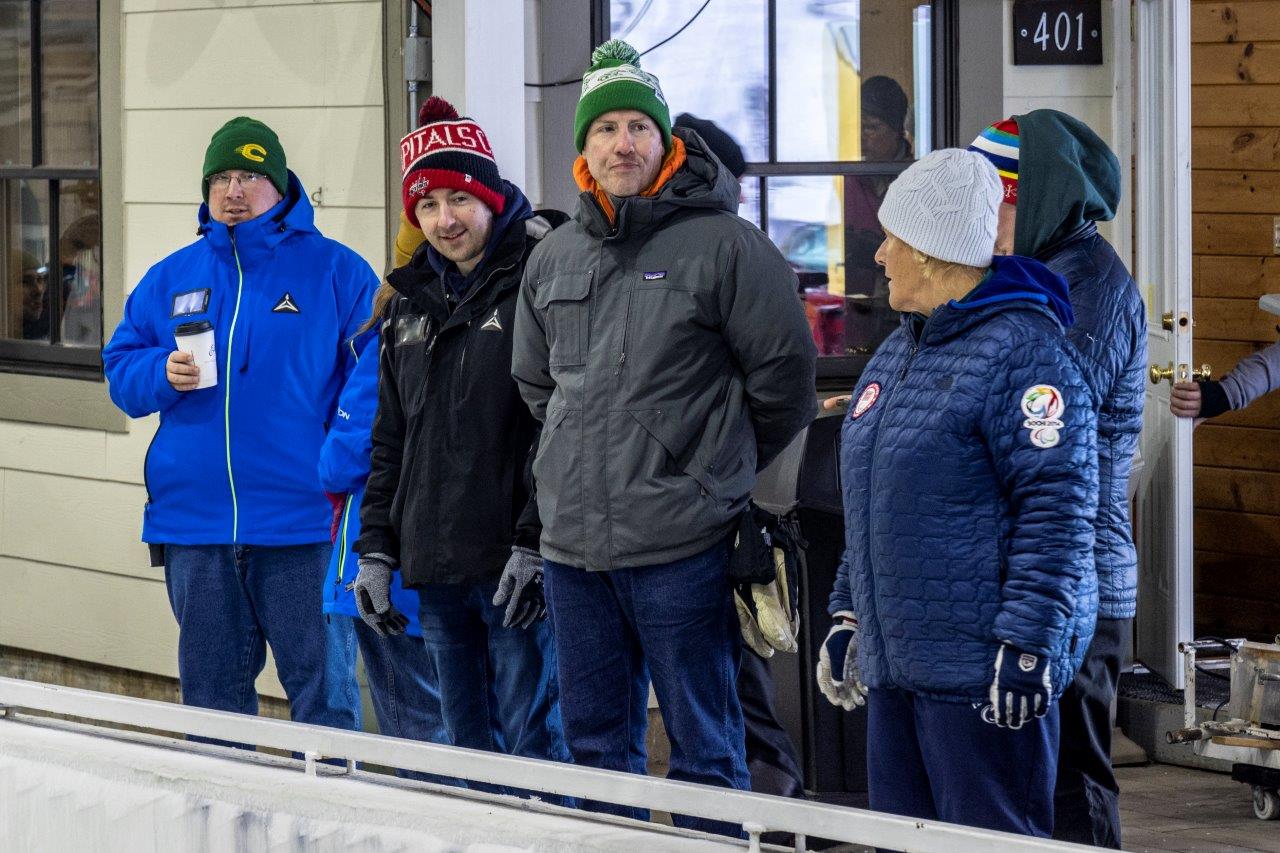
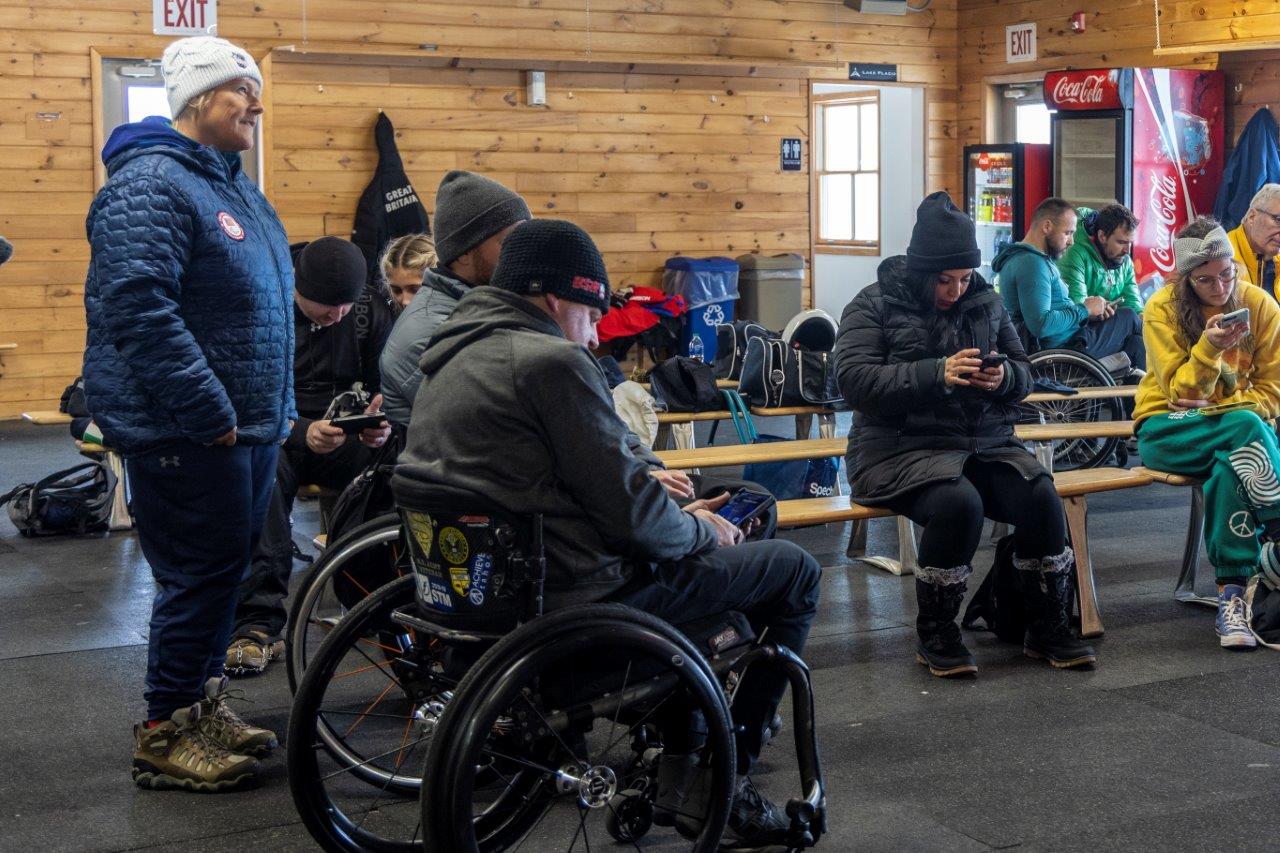
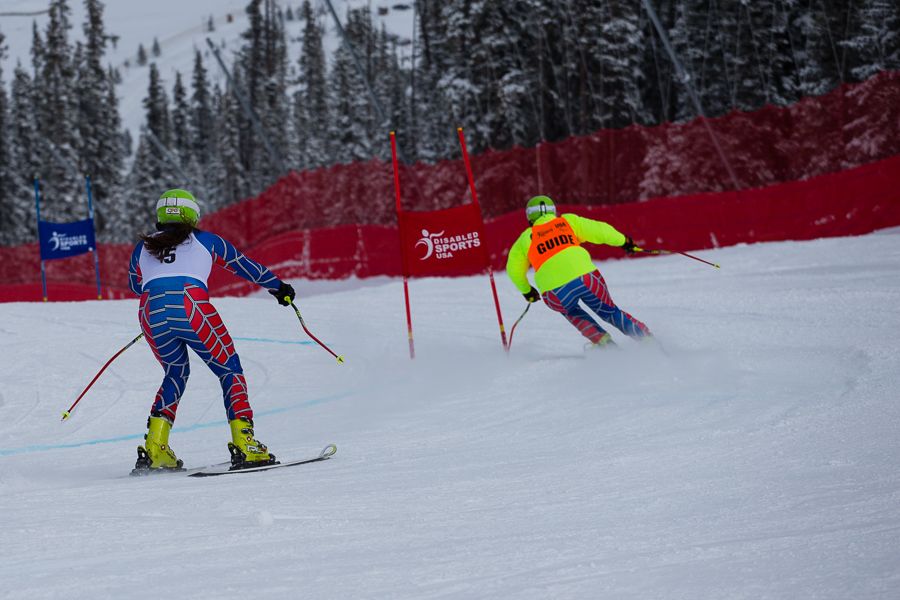
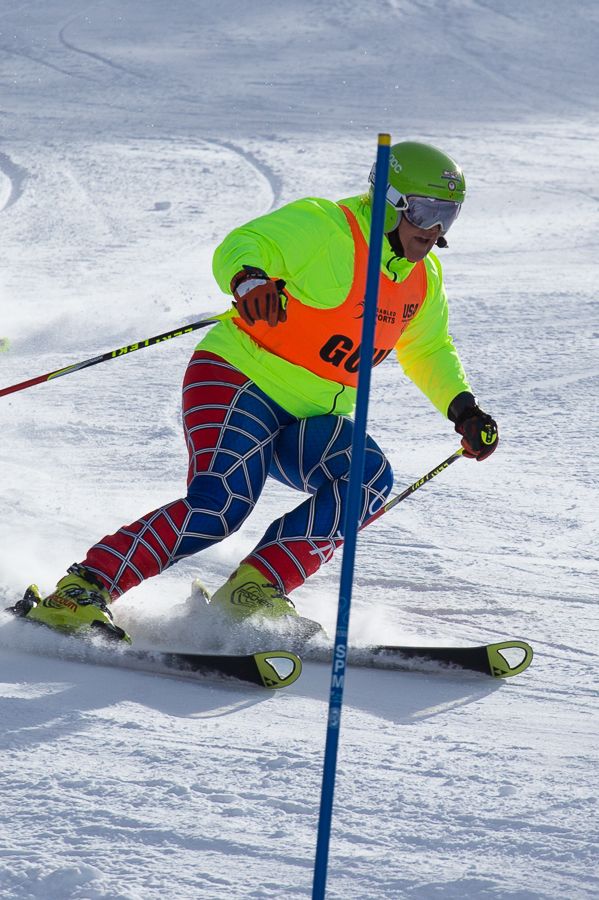
Seevers has always been a competitor and has always found new ways to express that trait. [Top: Mt. Van Hoevenberg, Lake Placid/ORDA; bottom: Matthew Fults]
The Heroes Journey was a young nonprofit organization. Mann had the mission down, but he needed help with fundraising and operations. He asked for Seevers’ resume, and she started working for The Heroes Journey part time, writing grants to secure funding that would help support the play and the workshops.
It was a perfect match. Because from Mann’s vantage point, James found healing through bobsled, too, and that was meaningful.
“He was a very hardcore, no-nonsense non-commissioned officer and had his own struggles with his transition and as combat-wounded — survivor’s guilt, post-traumatic stress — and he kinda went dark,” Mann says. “And he had found adaptive sports, particularly bobsledding, as a way to heal himself and find renewed purpose.”
A common thread between both The Heroes Journey and Seevers’ approach to coaching: the expectation that participants be real.
“Sometimes organizations coddle the veteran population, and I don’t think that’s good for most war fighters who have spent most of their life getting scuffed up,” Mann says. “For Kim, whether it’s from God or divinely inspired or what, she’s able to see through the BS of entitlement and push these athletes to be their best.
She’s able to see through the BS of entitlement and push these athletes to be their best.
“That’s how she comes at it. This is high-level performance, and you are a high-level performer, and I’m going to show you how to do this. As a Green Beret, that really resonated with me.”
In mid-2021, Seevers became deputy director of The Heroes Journey, a full-time job that led her to move from New York to Largo, Forida. It’s a big job but one that gives her new purpose, too. She still writes grants, still develops programs and still “creates things that are going to help make someone’s life better.”
And on that Saturday in January, she did a million other things, all day and evening. She helped set up and clean up supplies and food before and after the workshops. She led her former student to the Steppenwolf stage to see the Wall of Honor — photos of veterans and keepsakes of the fallen and objects as hallowed as a 9/11 piece of the Pentagon — which serves almost like an altar in the play. She hauled supplies down to the green room before the performance. Thirteen hours into her workday, she staffed the literature table as hundreds of guests filed into the theatre. Flying in those spotless but sensible Reeboks, she ran downstairs because someone needed something. Finally, at hour 17 of her workday, she accepted a ride back to her hotel, where the restaurant was closed and microwave mac and cheese had to suffice.
It was a day packed to the brim, much like her whole career, filled with the same commitment, insistence and conviction she brought to teaching gym, teaching skiing, teaching instructors, guiding Staci and running the bobsled team.
As Mann puts it: “She makes everyone around her play up, and that’s a real gift. And she’s not done yet. She’s on her own hero’s journey.”